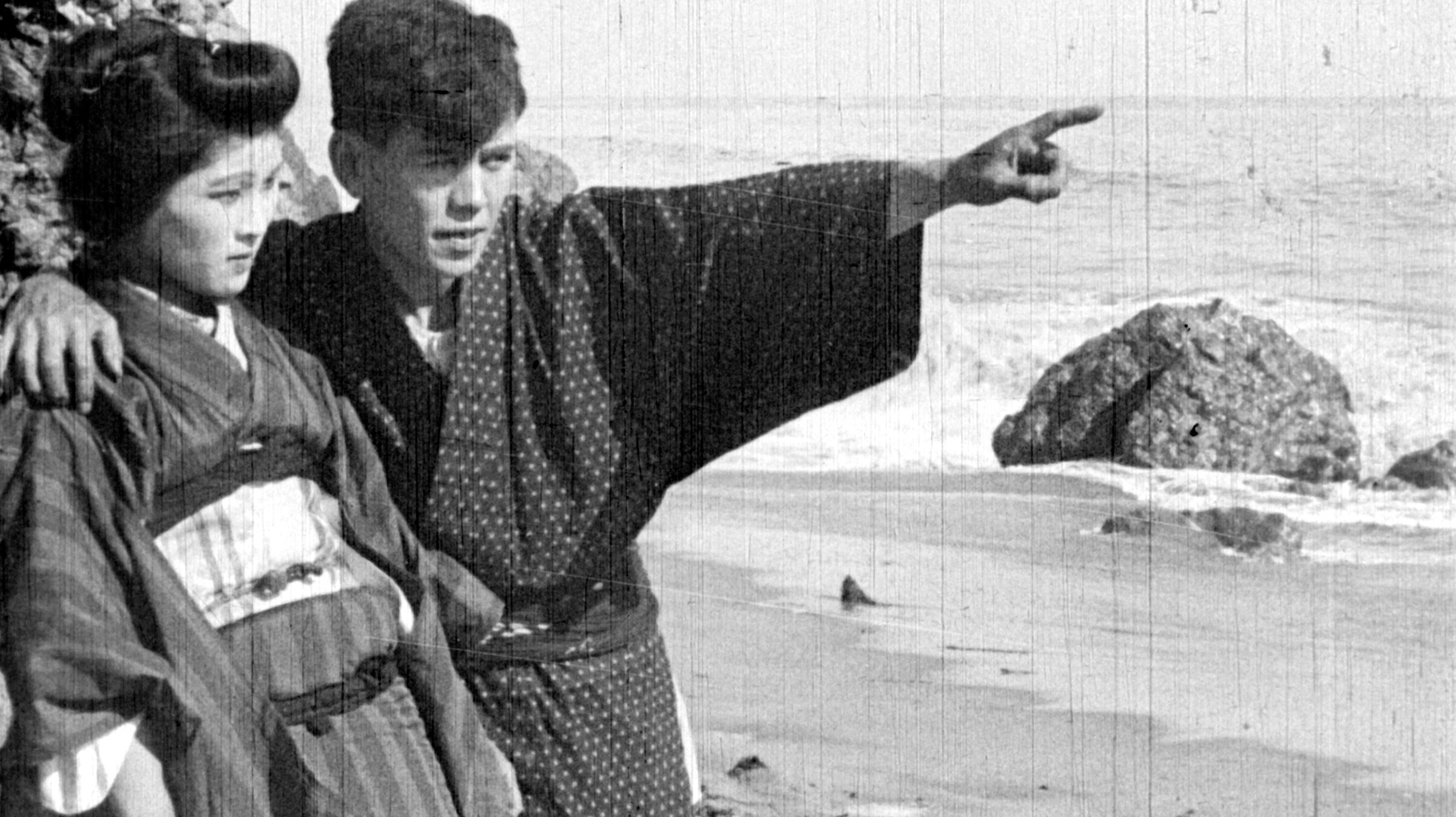WHERE IN THE WORLD IS CICERO SIMP?
While making The Garden of Allah in France, the company’s stills photographer, Henry Lachman, determined to gain a foothold in the industry, gathered some of those working on the Rex Ingram production, then shooting on the Riviera, to make a series of comedy shorts called Travelaughs. Ostensible tours of the attractions from Cannes to Menton, the cast includes a twenty-two-year-old Michael Powell as Cicero Simp, “naturalist and nuisance,” an accident-prone Brit sporting a pith helmet. Bryony Dixon, curator of silent film for the BFI National Archive, brings a tale of how the future half of the legendary Powell- Pressburger team (Black Narcissus, The Red Shoes) first got into movies, complete with snippets of Powell’s letters home to his Mum.
L.A. INDEPENDENTS
The Oath of the Sword is a 1914 drama about two lovers separated by an ocean after an ambitious young man leaves his beloved in Japan to study abroad at the University of California. The earliest known surviving film made by Asian Americans, this three-reeler was produced by a Los Angeles-based company of Japanese immigrants, using locations on the Berkeley campus. It also marks the first on-screen appearance of Abe Yutaka, who played Sessue Hayakawa’s valet the following year in Cecil B. DeMille’s The Cheat and continued to appear in Hollywood pictures before returning home in 1925 to forge a notable career as a writer, producer, and director. Scholar and author of Transpacific Convergences: Race, Migration, and Japanese American Film Culture before World War II, Denise Khor discusses this title, recently restored by George Eastman Museum and the Japanese American National Museum.
BEYOND BLACK AND WHITE
Silent-era filmmakers used color to help create fantastical worlds, heighten emotions, and add a touch of magic to their storytelling. Delicate tinting and toning processes bathed scenes in subtle hues, stencils could apply an overlay of affective color on a black-and-white image, spot color processes could add color to parts of an image, and natural color processes could approximate the look of the real world. David Pierce, coauthor of The Dawn of Technicolor: 1915–1935, traces the history that led to the breakthrough in color film that is Douglas Fairbanks’s The Black Pirate (1926) and what it took for filmmakers to go beyond black-and-white on screen: the aesthetics of color application, why it took so long for Technicolor to succeed, and why sound turned out to be the missing element needed for color to be commercially successful.

